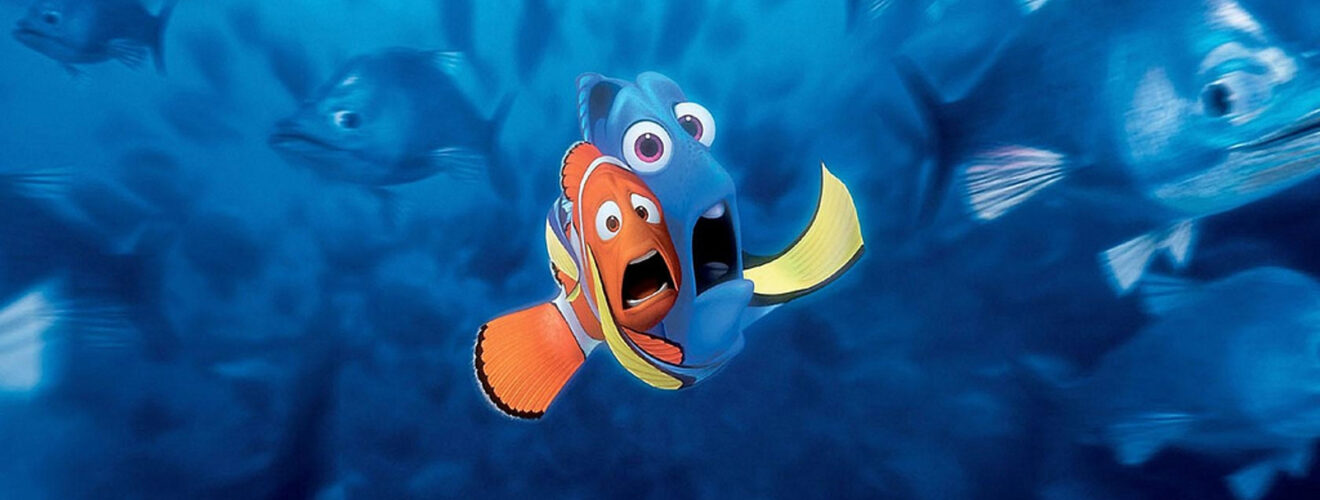Can fish feel pain or are they just too simple?

Humans interact with fish in a variety of ways; fisheries, aquaculture, recreational angling, ornamental pets and in scientific research. In a modern, ethical society it is crucial that we meet their welfare needs. Since animal welfare requirements hinge on our understanding of how animals perceive their environment, we have to ask ourselves, can fish really feel pain?
In scientific research, fish are protected from the moment they can feed independently under the Animals (Scientific Procedures) Act 1986, as are all other vertebrates and cephalopods. This legislation protects fish from pain, harm and suffering equal to or exceeding that caused by a hypodermic needle1. However, the scientific community is not in agreement as to whether or not fish can actually feel pain, which raises the question: just how appropriate is the act?
Brian Key of the University of Queensland, a professor of developmental neurobiology, released a controversial review of the scientific literature in 2016. Key concluded that fish do not possess the neural anatomy capable of processing pain2. This sparked a backlash from researchers who disagree with Key’s assessment of our current knowledge. Dr Lynne Sneddon, director of bioveterinary science at the University of Liverpool, argues that Key and other fish pain sceptics do not publish empirical evidence of their own, but rather selectively review papers, cherry picking arguments that support their agenda.
Sneddon, along with her colleagues Victoria Braithwaite and Michael Gentle, were the first to identify nociceptors in fish, back in 2003. These are receptor cells capable of detecting noxious or harmful stimuli, like heat or chemical irritants. They found 22 nociceptors on the face and head of rainbow trout and paved the way for further research into whether fish can feel pain or not3. This study did not prove that fish can feel pain, but was the first step in answering the question; an animal able to feel pain must have some means of detecting it.
Many behavioural studies have been carried out to test the ability of fish to feel pain. Rainbow trout have been shown to rub their lips on gravel and stop feeding when injected with bee venom, but not with a saline control4. They also failed to show a fear response when encountering strange objects whilst receiving a noxious stimulus5. Goldfish have been shown to avoid harmful heat sources6 and Nile tilapia that had their tailfins clipped reacted behaviourally and physiologically different to those who were only handled7. Evidently, it is necessary to put fish through the ringer to prove they feel pain. But, the question remains: are these responses purely reflexive or are these fish truly in pain?
Some studies claim to have shown evidence that there is some cognition involved when fish are subjected to harmful stimuli. Zebrafish subjected to a harmful stimulus, like a nice acetic acid injection, choose a barren, brightly lit tank with dissolved morphine in the water over a more enriched tank, which they would otherwise show a strong preference for 8. This suggests the zebrafish will pay a cost to alleviate a potential painful experience and therefore may well be suffering. However, our understanding of fish cognition is still in its infancy and we don’t yet know how to distinguish between reflexes and conscious decisions.
There are different approaches to animal welfare. Advocates of a feelings-based approach would be worried about whether an animal is suffering. Whereas a function-based approach is only concerned with whether or not an animal can function normally and is less concerned with the mental state of the animal involved. These differing approaches breed disagreement in the scientific community and can lead to issues of bias and lack of objectivity when approaching the argument.
Some argue that we should afford fish the “benefit of the doubt”. This is where we concede that we have not yet answered the question of fish pain, but should assume that fish can feel pain until the converse is proven. This is criticised for being restrictive in the sense that policy makers will exclude valid science in favour of an unfoundedly cautious humane approach9.This might not sound like such a bad thing to some, but care has to be taken to base policy on fact rather than sentiment.
Whether fish feel pain or not is still very much an open question. It is one that descends into controversy at times and therefore must be approached objectively and evaluated using empirical evidence. We interact with fish on a vast scale. Scotland alone produced 179,022 tonnes of farmed fish in 201410, Scottish fishing vessels landed 418,000 tonnes of sea fish in 201411, and recreational angling and the pet trade are hugely popular. Therefore, if we are to be concerned with the welfare of fish during such activities, then it is vitally important that we better understand their ability to perceive pain and suffering.
This article was specialist edited by James D. Burgon and copy edited by Kimberley Wood.
References
- https://www.gov.uk/government/uploads/system/uploads/attachment_data/file/116843/aspa-draft-guidance.pdf
- http://animalstudiesrepository.org/cgi/viewcontent.cgi?article=1011&context=animsent
- Sneddon, L. U., Braithwaite, V. A. & Gentle, M. J. 2003a. Do fishes have nociceptors? Evidence for the evolution of a vertebrate sensory system. Proceedings of the Royal Society B-Biological Sciences, 270, 1115-1121.
- Sneddon, L. U., Braithwaite, V. A. & Gentle, M. J. 2003a. Do fishes have nociceptors? Evidence for the evolution of a vertebrate sensory system. Proceedings of the Royal Society B-Biological Sciences, 270, 1115-1121.
- Sneddon, L. U., Braithwaite, V. A. & Gentle, M. J. 2003b. Novel object test: Examining nociception and fear in the rainbow trout. Journal of Pain, 4, 431-440.
- Nordgreen, J., Garner, J. P., Janczak, A. M., Ranheim, B., Muir, W. M. & Horsberg, T. E. 2009. Thermonociception in fish: Effects of two different doses of morphine on thermal threshold and post-test behaviour in goldfish (Carassius auratus). Applied Animal Behaviour Science, 119, 101-107.
- Roques, J. A. C., Abbink, W., Geurds, F., Van de Vis, H. & Flik, G. 2010. Tailfin clipping, a painful procedure Studies on Nile tilapia and common carp. Physiology & Behavior, 101, 533-540.
- Sneddon, L. U. 2013. Do painful sensations and fear exist in fish. In: Van der Kemp, T. A. & Lachance, M. E. (eds.) Animal suffering: From science to law, international symposium Toronto, Canada: Carswell.
- Rose, J. D., Arlinghaus, R., Cooke, S. J., Diggles, B. K., Sawynok, W., Stevens E. D. & Wynne, C. D. L. 2014. Can fish really feel pain? Fish and Fisheries, 15, 97-133.
- http://www.gov.scot/Publications/2015/09/6580
- http://www.gov.scot/Publications/2015/09/1961/3#ch11










